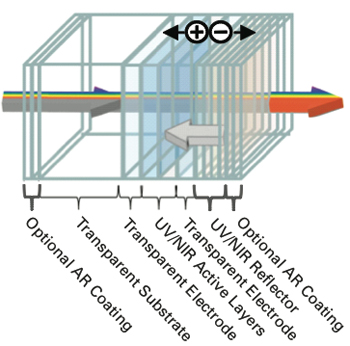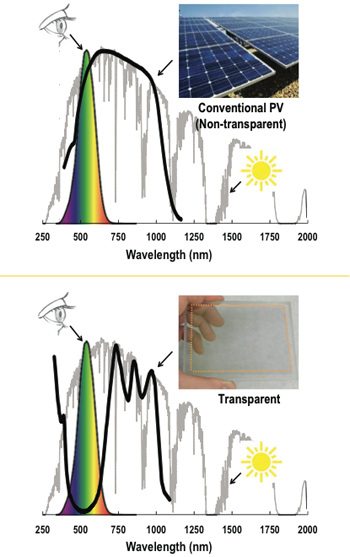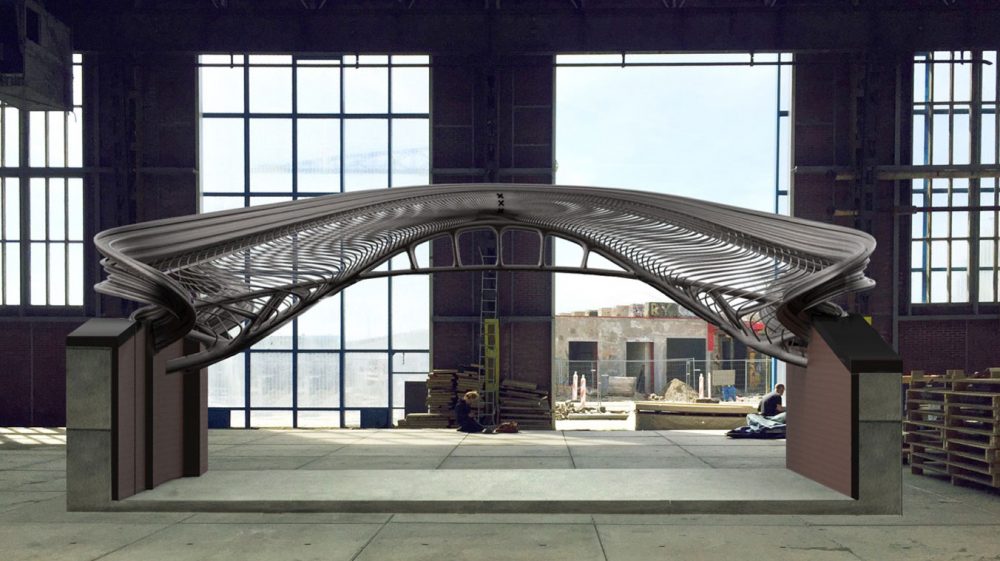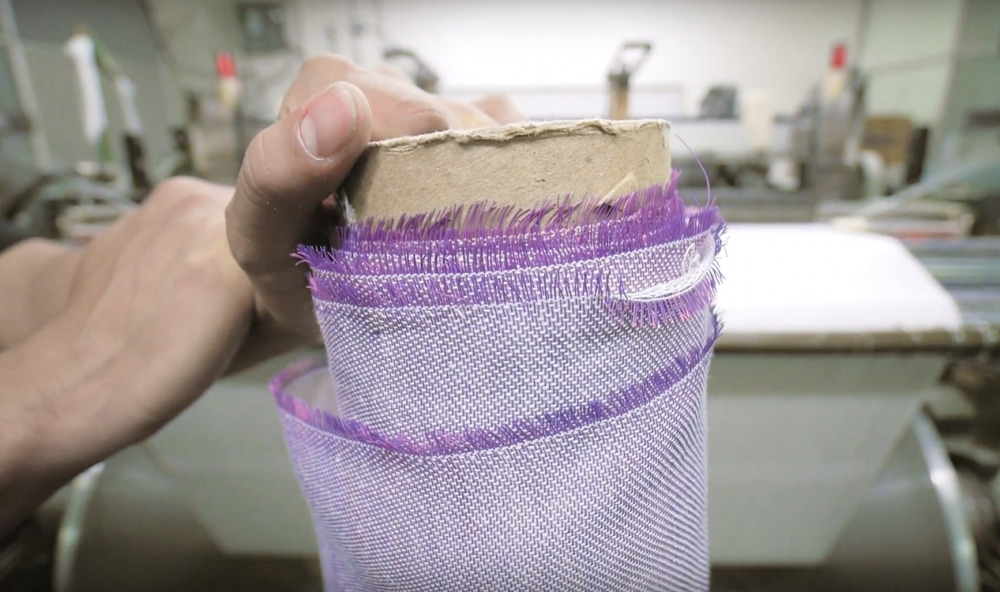MIT researchers are making transparent solar cells that could turn everyday products such as windows and electronic devices into power generators—without altering how they look or function today. How? Their new solar cells absorb only infrared and ultraviolet light. They’re now beginning to integrate their solar cells into consumer products, including mobile device displays.
See-through solar materials that can be applied to windows represent a massive source of untapped energy and could harvest as much power as bigger, bulkier rooftop solar units, scientists report today in Nature Energy.
 Led by engineering researchers at Michigan State University, the authors argue that widespread use of such highly transparent solar applications, together with the rooftop units, could nearly meet U.S. electricity demand and drastically reduce the use of fossil fuels.
Led by engineering researchers at Michigan State University, the authors argue that widespread use of such highly transparent solar applications, together with the rooftop units, could nearly meet U.S. electricity demand and drastically reduce the use of fossil fuels.
Difference from PVs
“Highly transparent solar cells represent the wave of the future for new solar applications,” said Richard Lunt, the Johansen Crosby Endowed Associate Professor of Chemical Engineering and Materials Science at MSU. “We analyzed their potential and show that by harvesting only invisible light, these devices can provide a similar electricity-generation potential as rooftop solar while providing additional functionality to enhance the efficiency of buildings, automobiles and mobile electronics.”
Scientifically, a transparent solar panel is something of an oxymoron. Solar cells, specifically the photovoltaic kind, make energy by absorbing photons (sunlight) and converting them into electrons (electricity). If a material is transparent, however, by definition it means that all of the light passes through the medium to strike the back of your eye. This is why previous transparent solar cells have actually only been partially transparent — and, to add insult to injury, they usually they cast a colorful shadow too.
 To get around this limitation, the Michigan State researchers use a slightly different technique for gathering sunlight. Instead of trying to create a transparent photovoltaic cell (which is nigh impossible), they use a transparent luminescent solar concentrator(TLSC). The TLSC consists of organic salts that absorb specific non-visible wavelengths of ultraviolet and infrared light, which they then luminesce (glow) as another wavelength of infrared light (also non-visible). This emitted infrared light is guided to the edge of plastic, where thin strips of conventional photovoltaic solar cell convert it into electricity. [Research paper: DOI: 10.1002/adom.201400103 – “Near-Infrared Harvesting Transparent Luminescent Solar Concentrators”]
To get around this limitation, the Michigan State researchers use a slightly different technique for gathering sunlight. Instead of trying to create a transparent photovoltaic cell (which is nigh impossible), they use a transparent luminescent solar concentrator(TLSC). The TLSC consists of organic salts that absorb specific non-visible wavelengths of ultraviolet and infrared light, which they then luminesce (glow) as another wavelength of infrared light (also non-visible). This emitted infrared light is guided to the edge of plastic, where thin strips of conventional photovoltaic solar cell convert it into electricity. [Research paper: DOI: 10.1002/adom.201400103 – “Near-Infrared Harvesting Transparent Luminescent Solar Concentrators”]
Efficiency
The prototype TLSC currently has an efficiency of around 1%, but they think 10% should be possible once production commences. Non-transparent luminescent concentrators (which bathe the room in colorful light) max out at around 7%. On their own these aren’t huge figures, but on a larger scale — every window in a house or office block — the numbers quickly add up. And while we’re probably not talking about a technology that can keep your smartphone or tablet running indefinitely, replacing your device’s display with a TLSC could net you a few more minutes or hours of usage on a single battery charge.
Sources
1-https://www.nature.com/articles/s41560-017-0016-9
2-https://www.extremetech.com/extreme/188667-a-fully-transparent-solar-cell-that-could-make-every-window-and-screen-a-power-source
3-https://phys.org/news/2017-10-transparent-solar-technology-future.amp








